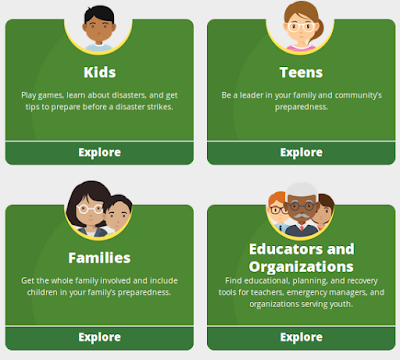
Note: September is National Preparedness Month. Follow this year’s campaign on Twitter by searching for the #NatlPrep #BeReady or #PrepMonth hashtags.
This month, as part of #NPM21, I’ll be rerunning some updated preparedness essays, along with some new ones.
#16,196
Two years ago, in a National Preparedness Month essay, I wrote:
No matter where you live, if you've got kids, the odds they will have some sort of brush with an emergency or disaster over the next decade. Hopefully it will happen when they are with their parents, but it could happen at school, or other times when they are away from home.
In the past 24 months, Americans have seen 20 landfalling named storms (both hurricanes and tropical storms) leaving millions without electricity for days or sometimes even weeks, massive wildfires forcing evacuations and destroying literally thousands of homes (mostly) in the Western States, and oh yes, a coronavirus pandemic which has closed schools, sickened tens of millions, and killed over 650,000, in the United States alone.
And this doesn't begin to count the millions of families who have been affected by lesser events, like ice storms, blizzards, Derechos, tornadoes, floods, house fires, etc.
You'd be hard pressed to find any adolescent or child who hasn't been adversely affected by some kind of crisis, emergency, or disaster over the past couple of years. Yet today, children and adolescents are rarely included in the `Emergency Preparedness' conversation.
It wasn't always so.
Within two years we'd both become EMTs and later paramedics. It was, admittedly, a different time.
But it helped to prepare us for a variety of challenges we would face in the decades to come. And I'm saddened that so few kids are afforded those types of opportunities today. Shooting zombies on a video game console may be safer, but it is a poor substitute for real adventure.
Today, while the threat level is arguably arguably higher than anytime in my lifetime, many parents appear reticent to discuss emergency preparedness with their kids.
Fortunately, disaster preparedness – particularly for kids - has come a long way from the `bad old days’ of the cold war, and there are `kid friendly' teaching tools available online from a variety of government agencies.
 |
| READY.GOV |
Helping kids to understand more about emergency preparedness and community resilience will help them cope (and perhaps, even help) in the event they, or their community, are caught up in a disaster.
I strongly urge parents to find and teach age-appropriate preparedness skills to their children. To include them in family `emergency drills' and discussions, and to make sure they know where to go (a friend, a neighbor, the local fire house etc.) if they should become separated from the family during an emergency.
For more resources for teaching kids about emergency preparedness, you may wish to visit:
Teaching Kids About Emergency Preparedness - American Red CrossChildren In Disasters: Kids and Families -CDCEmergency Preparedness for Children - Canadian Govt.
